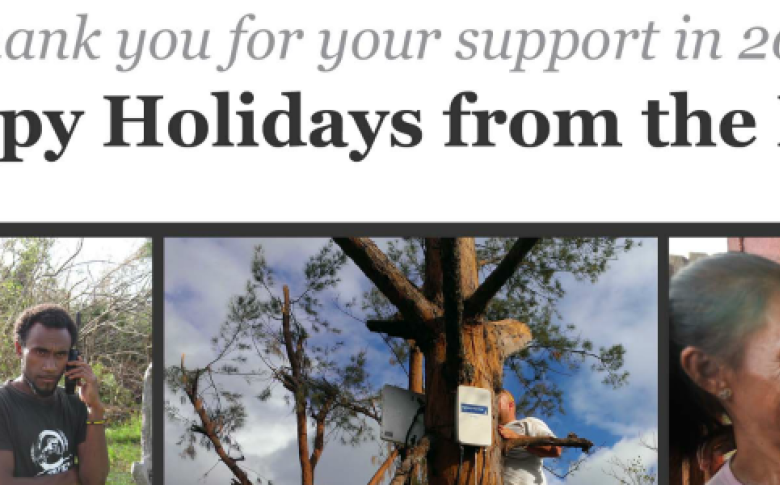2015: A Year of ETC Transformation

2015 was a year of transformation for the Emergency Telecommunications Cluster (ETC). We started January with the same party line we’ve had for the past five years, but by April, the ETC vision, scope and approach had radically expanded. From providing services to humanitarians, to seeking to ensure all those responding to emergencies - including affected populations - have access to communications services, the ETC2020 strategy has transformed the ETC and will transform humanitarian emergency response operations.
2015 is characterised by the adoption and commenced implementation of ETC2020 as well as the most concurrent emergencies ever responded to; and the invaluable contributions of its members and partners without which, the ETC would not exist.
Eight Concurrent Emergencies
In addition to operations in Central Africa Republic, Iraq, South Sudan, Syria and West Africa inherited from 2014, conflict raging in Yemen, Cyclone Pam in Vanuatu and the earthquakes in Nepal added additional connectivity demands on the already stretched network. In all, the ETC responded to an unprecedented eight concurrent emergencies.
Across these operations, the ETC experienced a number of ‘firsts’, indicative of the evolving emergency landscape and which would influence the new strategy. Seeing that the community needing connectivity to respond to Ebola in West Africa was not ‘just’ humanitarians, the ETC expanded its scope, providing services to humanitarian, healthcare and government responders at 80+ facilities across the three affected countries. Responding at the direct request of the government, in Vanuatu, the ETC was “embedded” in the Office of the Chief Information Officer, working directly with the National Disaster Management Office. In Nepal, ETC preparedness efforts had established a solid network of humanitarian, private sector and government entities which allowed a faster and more effective response after the quake.
The rapidly evolving humanitarian and technology environments shape the way the ETC responds.
New Strategy for Humanitarian Connections
April 2015 was the turning point. Developed in close collaboration with over 40 organisations, the ambitious ETC2020 strategy builds upon the cluster’s years of experience, its expertise and its network of dedicated partners. Through ETC2020, for the first time, the ETC is engaging in Communications with Communities (CwC), leveraging its network and expertise to provide disaster affected people with the ability to communicate and supporting their leadership in a more accountable humanitarian environment.
The ETC is working with governments in high-risk countries to build communications resilience, enabling them to play a larger role in their own emergency response and recovery. In recognition of communities’ role in first response, ETC2020 activities seek to improve and decentralise preparedness activities. Throughout this 2020 transformation, connectivity and energy solutions will be enhanced and the ETC will continue to deliver its current mandate of providing timely, predictable, and effective emergency communications services to the humanitarian community.
Valued ETC Network of Partners
Achieving the ETC2020 vision will take strong engagement and coordination with the humanitarian, government and private sectors - partnership and collaboration are key to successful functioning of the ETC. By the end of 2015, the ETC network comprised 23 member organisations and a wide range of new and evolving partners.
Two pioneering charters were developed and signed this year with the private sector: the Humanitarian Connectivity Charter for the mobile industry and the Crisis Connectivity Charter for the satellite community. Voluntarily signed by world industry leaders, these charters are sets of commitments to enhance connectivity in times of crises, facilitating communications between – to – from – and across all those responding to humanitarian emergencies, including affected communities.
The ETC continues to engage with an expanded and more connected network, from leading edge IT companies and local telecommunications providers, to humanitarians, governments and affected communities.
Moving Forward With A New Approach
2015 was a year of change for the ETC, but in many ways it was not unique. More emergencies, across wider areas and affecting more people has become the new norm and one for which the entire response community must prepare.
While continuing to provide connectivity services to the response community, the ETC party line is very different now to what it was 12 months ago. And in just four years from now, through working with governments to build resilience, decentralising response readiness and strengthening the capacity of affected people to respond, the ETC will ensure that all those responding to humanitarian emergencies have access to vital communications services and digital aid.
The ETC wishes it members, partners, and entire network a happy, healthy and safe holiday season.